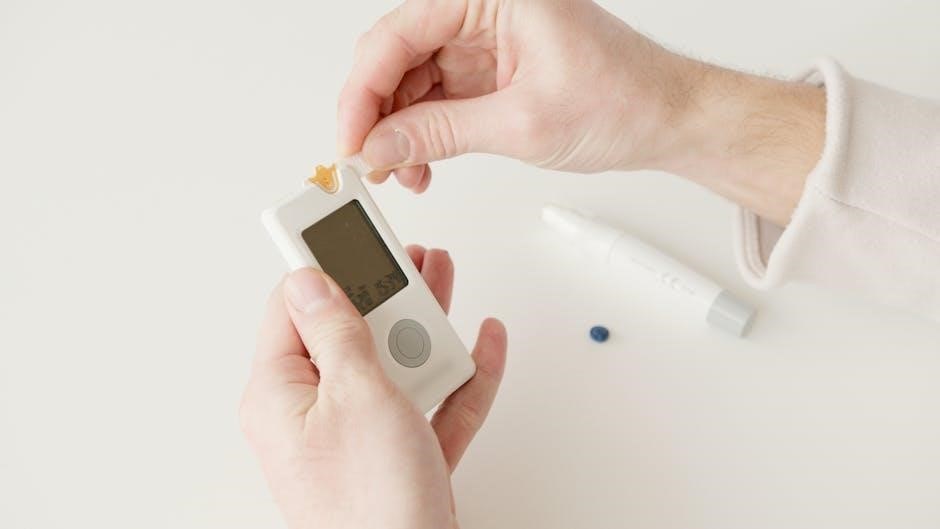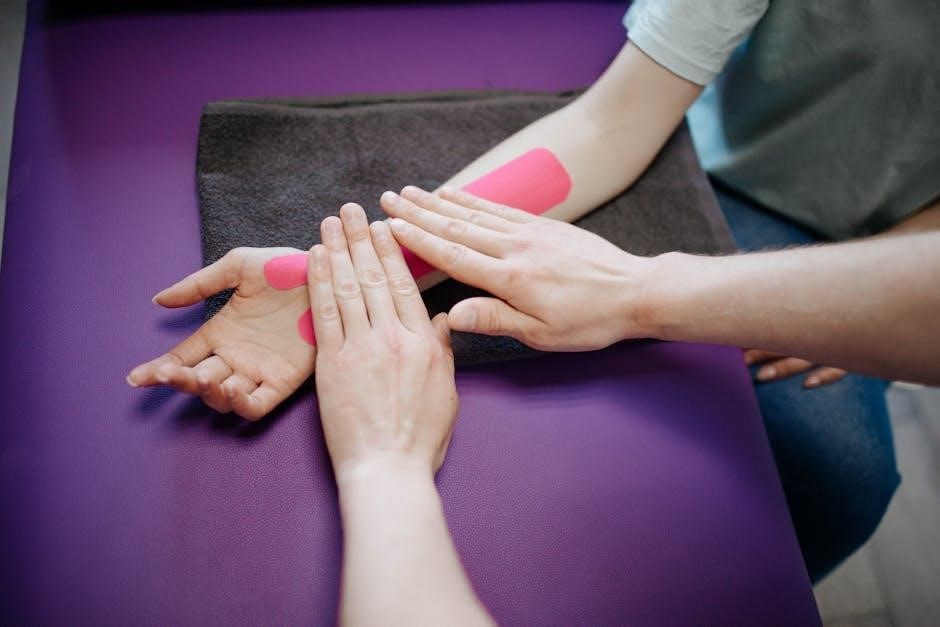manual muscle testing 8
Manual muscle testing 8 is a method used to assess muscle strength‚
commonly used
in clinical practice to evaluate patients‚ with various techniques and scales‚ including the Medical Research Council Scale‚ to measure muscle strength accurately and consistently every time․
Definition and Purpose

Manual muscle testing 8 refers to the process of evaluating the strength of individual muscles or muscle groups‚ typically using a scale to grade the level of strength․ The purpose of manual muscle testing 8 is to assess the functional ability of muscles‚ identify weaknesses or imbalances‚ and monitor changes in muscle strength over time․ This information can be used to inform treatment decisions‚ develop exercise programs‚ and evaluate the effectiveness of interventions․ In clinical practice‚ manual muscle testing 8 is commonly used to evaluate patients with musculoskeletal injuries‚ neurological disorders‚ or other conditions that affect muscle function․ The test is typically performed by a qualified healthcare professional‚ such as a physical therapist or occupational therapist‚ who has the necessary training and expertise to administer the test accurately and interpret the results․ By using manual muscle testing 8‚ healthcare professionals can gain valuable insights into muscle function and develop targeted interventions to improve strength‚ function‚ and overall health․ The test is an essential tool in the assessment and management of a wide range of conditions‚ and its use is supported by a significant body of research and clinical evidence․

Grades of Manual Muscle Testing
Manual muscle testing 8 uses various grading systems‚ including the Medical Research Council Scale‚ to evaluate muscle strength and function accurately and consistently every time with different scales․
MRC Scale
The Medical Research Council Scale is a widely used method for assessing muscle strength‚ particularly in the context of manual muscle testing 8․ This scale grades muscle strength on a scale of 0 to 5‚ with 0 indicating no muscle contraction and 5 indicating normal muscle strength․ The MRC Scale is a reliable and consistent method for evaluating muscle function‚ and it is commonly used in clinical practice to assess patients with various muscle disorders․ The scale takes into account the patient’s ability to move their joints through a range of motion‚ as well as their ability to resist gravity and external forces․ By using the MRC Scale‚ clinicians can accurately assess muscle strength and function‚ and develop effective treatment plans for patients with muscle weakness or other muscle-related disorders․ The MRC Scale is an essential tool in manual muscle testing 8‚ and it is widely used by clinicians and researchers around the world․ It provides a standardized method for assessing muscle strength‚ which is essential for developing effective treatment plans and monitoring patient progress over time․

Principles of Manual Muscle Testing
Manual muscle testing 8 involves specific principles‚ including patient positioning‚ stabilization‚ and resistance application‚ to ensure accurate and reliable muscle strength assessments‚ using various techniques and methods‚ every time‚ consistently․
Position and Stabilization
Proper positioning and stabilization are crucial components of manual muscle testing 8‚ as they allow for accurate assessment of muscle strength․ The patient is typically positioned in a way that eliminates or minimizes the effects of gravity‚ and the tester provides stabilization to prevent movement of adjacent joints․ This helps to isolate the muscle being tested and ensures that the results are reliable and consistent․ The position of the patient and the tester is critical‚ as it can affect the outcome of the test․ The tester must be able to apply resistance in a way that is consistent and controlled‚ and the patient must be able to generate maximum force without being distracted by discomfort or pain․ By controlling the position and stabilization‚ the tester can ensure that the results of the manual muscle test are accurate and reflective of the patient’s true muscle strength․ This is essential for developing effective treatment plans and monitoring progress over time․ Effective positioning and stabilization require a thorough understanding of anatomy and physiology‚ as well as the specific testing procedures․
Application of Resistance
The application of resistance is a critical component of manual muscle testing 8‚ as it allows the tester to assess the patient’s muscle strength․ The resistance is typically applied by the tester‚ who uses their hands or a device to provide a counterforce to the patient’s muscle contraction․ The amount and direction of resistance vary depending on the specific test and the muscle being evaluated․ The tester must be able to apply resistance in a way that is consistent and controlled‚ and the patient must be able to generate maximum force against the resistance․ The application of resistance helps to isolate the muscle being tested and ensures that the results are reliable and consistent․ The tester must also be able to grade the resistance appropriately‚ taking into account the patient’s age‚ size‚ and overall health status․ By applying resistance in a controlled and consistent manner‚ the tester can obtain accurate and reliable results‚ which are essential for developing effective treatment plans and monitoring progress over time․ Effective application of resistance requires a thorough understanding of anatomy and physiology‚ as well as the specific testing procedures and techniques․

Types of Manual Muscle Testing
Manual muscle testing 8 includes various methods‚ such as break testing and make testing‚ to evaluate muscle strength and function‚ using
specific techniques
and equipment‚ every time‚ accurately․
Make or Active Strength Testing
Make or active strength testing is a type of manual muscle testing 8 that involves the patient actively contracting their muscle to resist the examiner’s force‚ using a variety of techniques and equipment to measure muscle strength․ This type of testing is commonly used to evaluate the strength of individual muscles or muscle groups‚ and can be used to identify muscle imbalances or weaknesses․ The examiner will typically ask the patient to contract their muscle and hold it against resistance‚ while the examiner applies a force to try to overcome the patient’s contraction․ The patient’s ability to resist the examiner’s force is then measured and graded‚ using a scale such as the Medical Research Council Scale․ Make or active strength testing is an important component of manual muscle testing 8‚ as it provides valuable information about muscle function and strength‚ and can be used to develop effective treatment plans․ By using make or active strength testing‚ clinicians can gain a better understanding of muscle function and develop targeted interventions to improve muscle strength and function․ Manual muscle testing 8 is a valuable tool for clinicians‚ and make or active strength testing is an important part of this assessment․
Break or Passive Strength Testing
Break or passive strength testing is a type of manual muscle testing 8 that involves the examiner applying a force to the patient’s muscle to overcome its contraction‚ without the patient actively resisting․ This type of testing is used to evaluate the strength of individual muscles or muscle groups‚ and can be used to identify muscle weaknesses or imbalances․ The examiner will typically apply a gradual and controlled force to the patient’s muscle‚ while the patient remains relaxed‚ and the point at which the muscle is overcome is noted․ Break or passive strength testing is an important component of manual muscle testing 8‚ as it provides valuable information about muscle function and strength․ The results of break or passive strength testing can be used to develop effective treatment plans‚ and to monitor progress over time․ By using break or passive strength testing‚ clinicians can gain a better understanding of muscle function and develop targeted interventions to improve muscle strength and function․ This type of testing is often used in conjunction with other forms of manual muscle testing 8 to provide a comprehensive assessment of muscle function․
